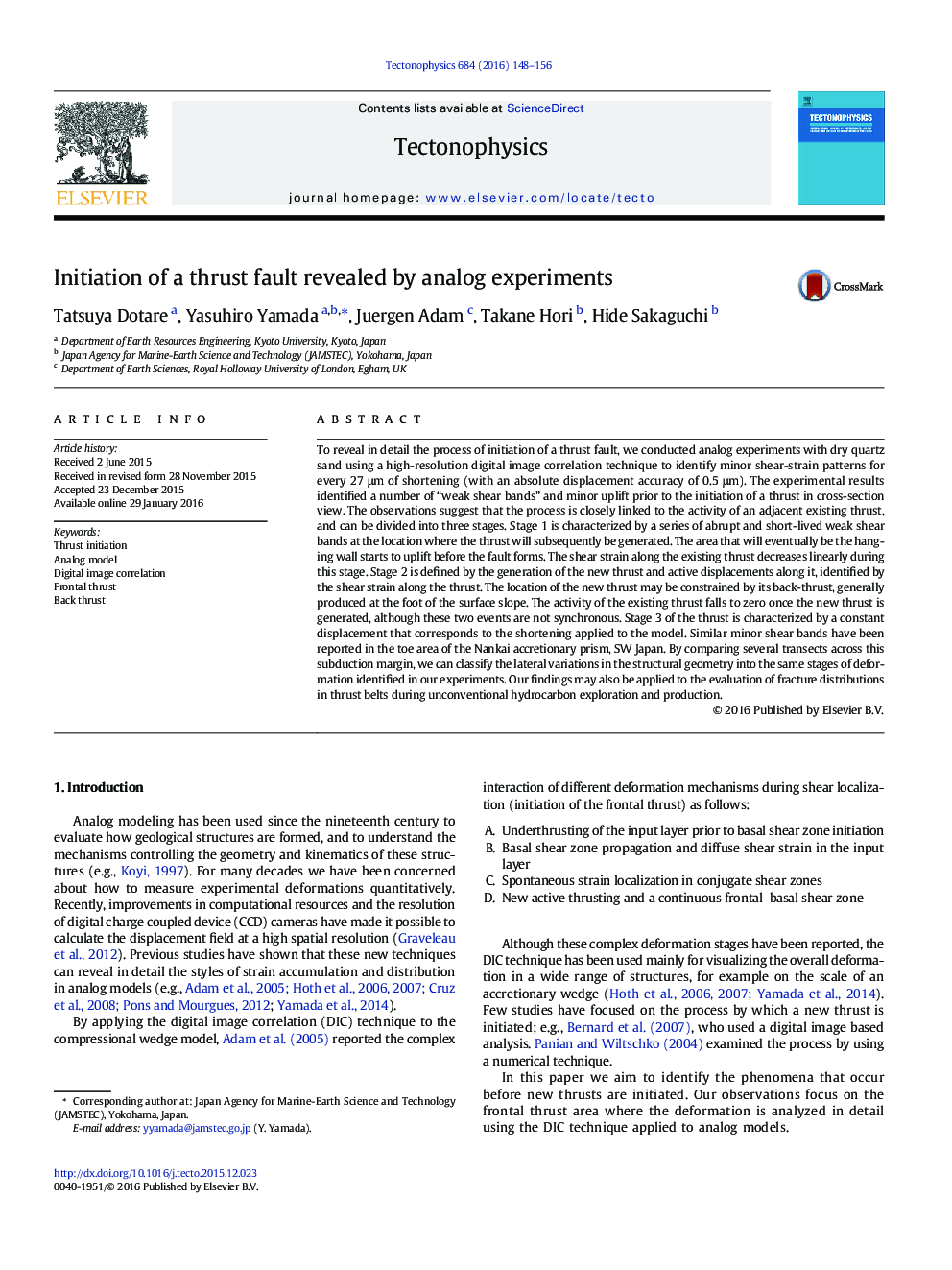| کد مقاله | کد نشریه | سال انتشار | مقاله انگلیسی | نسخه تمام متن |
|---|---|---|---|---|
| 4691246 | 1636714 | 2016 | 9 صفحه PDF | دانلود رایگان |
• Thrust initiation process can be divided into three stages.
• Many abrupt and short-lived weak shear bands are produced before thrust initiation.
• Hanging wall starts to uplift before new thrust fault forms.
• Location of new thrust is determined by its back-thrust.
• Lateral structural variations can be due to different stages of thrust initiation.
To reveal in detail the process of initiation of a thrust fault, we conducted analog experiments with dry quartz sand using a high-resolution digital image correlation technique to identify minor shear-strain patterns for every 27 μm of shortening (with an absolute displacement accuracy of 0.5 μm). The experimental results identified a number of “weak shear bands” and minor uplift prior to the initiation of a thrust in cross-section view. The observations suggest that the process is closely linked to the activity of an adjacent existing thrust, and can be divided into three stages. Stage 1 is characterized by a series of abrupt and short-lived weak shear bands at the location where the thrust will subsequently be generated. The area that will eventually be the hanging wall starts to uplift before the fault forms. The shear strain along the existing thrust decreases linearly during this stage. Stage 2 is defined by the generation of the new thrust and active displacements along it, identified by the shear strain along the thrust. The location of the new thrust may be constrained by its back-thrust, generally produced at the foot of the surface slope. The activity of the existing thrust falls to zero once the new thrust is generated, although these two events are not synchronous. Stage 3 of the thrust is characterized by a constant displacement that corresponds to the shortening applied to the model. Similar minor shear bands have been reported in the toe area of the Nankai accretionary prism, SW Japan. By comparing several transects across this subduction margin, we can classify the lateral variations in the structural geometry into the same stages of deformation identified in our experiments. Our findings may also be applied to the evaluation of fracture distributions in thrust belts during unconventional hydrocarbon exploration and production.
Figure optionsDownload as PowerPoint slide
Journal: Tectonophysics - Volume 684, 2 August 2016, Pages 148–156
